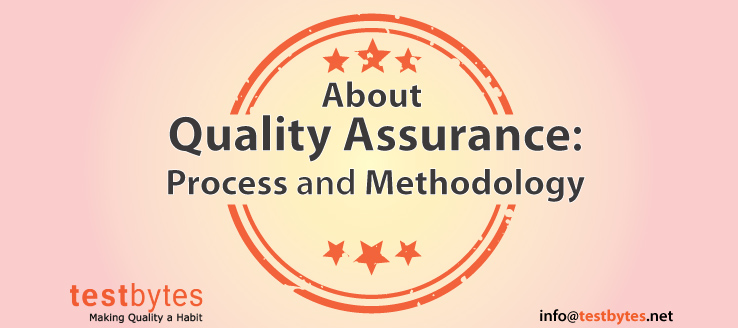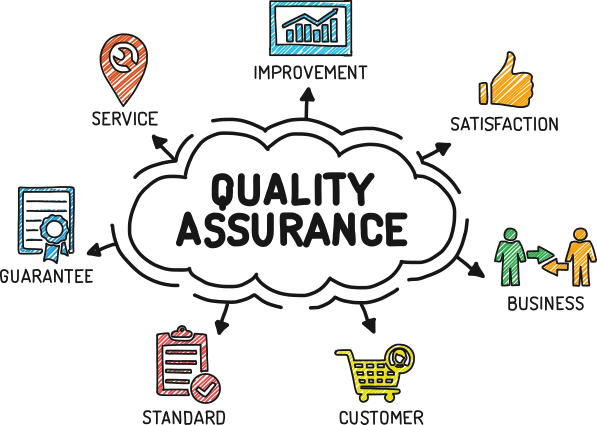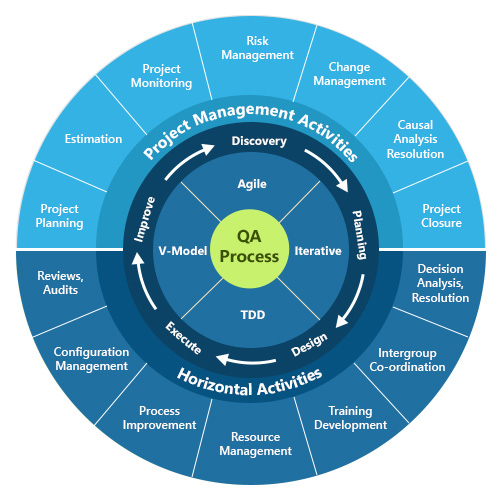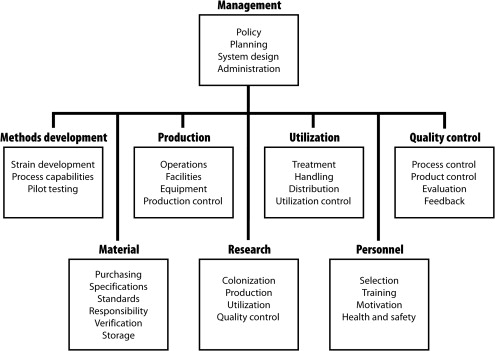
What is Quality Assurance (QA)? Process and Methodology
April 26th, 2019

Quality Assurance (QA) is something other than manual testing. The current frameworks are more unpredictable than customary methodologies can deal with. New automated test methods have developed enabling machines to automatically and thoroughly test themselves for flaws.
With this article, we are going to give you in-depth knowledge about Quality Assurance.

What is Quality Assurance?
Quality Assurance (QA) or Software Quality Assurance (SQA) is a planned and systematic model of activities essential to give satisfactory assurance that a product adjusts to prerequisites amid software improvement.
SQA incorporates the complete software development life cycle, and the purpose is to make sure that the development and support processes are refined continuously to generate products which satisfy specs.
Remember that the range of quality isn’t restricted to merely Software Testing. For instance, how adequately the requirements are asserted and also maintained quite matter.
Software Quality Assurance comprises of strategies and practices of evaluating the software development methods, processes, technologies, and tools used to guarantee the quality of the created product. It is typically accomplished by using well-planned standard systems, covering processes and tools, for quality control to assure the reliability and dependability of the product.
What are the principles of software quality assurance?
The important principles to follow for software quality assurance are:
1. Stopping Problems Before They Happen: It is better to prevent mistakes in the software development process from occurring rather than correcting them later on. This principle states the importance of finding and temporarily resolving issues at an early stage in a procedure.
2. Always Getting Better: Quality assurance of software is not a one-off process. It should be an integral part of the entire development cycle. This principle advocates for constant checking and updating of the software throughout its operation.
3. Including Everyone: All stakeholders, such as developers clients and testers along with the project managers need to work together. This principle notifies that all need to communicate and work together to produce quality software.
4. Focusing on the Big Risks: It is necessary to define and manage the most significant risks in software. This principle refers to focusing on the risks that have the maximum potential impact on software.
Due to these principles, the software is not just fixed when problems appear but it is made with high quality from the beginning.
The Quality Assurance process can involve –
- Recognizing standards when any applied in software development methods.
- To carry traditional processes, for example, quality reviews.
- Conduct in-process test data recording processes.
- Encouraging documentation procedure measures.
This extraordinary issue fills in as a platform for experts to display hypothesis, results, understanding, and different progressions in Software Quality Assurance process.
Process of Quality Assurance

Below are a few quality characteristics of the Quality Assurance process –
- Concentrate on the User Experience
Testing at all stages of the venture is critical. However, the most dominant point is the user experience.
In case that the UX is terrible, it unavoidably implies the quality isn’t of standard. Despite the fact that this will presumably result in variations in the earlier stage of software development, the user experience should dependably be at the leading place.
- Automation and Continuous Integration
Automation is essential since it offers quick review, empowering continuous integration – an important part of the agile approach.
Automation is additionally solution to lessening costs and improving the productivity of your QA staff; that is one of the principle reasons why QA engineers must teach themselves and be apt to execute automation processes.
- Test and Code Coverage
Numerous QA managers ramble about “test coverage,” that gives a decent broad image of the quality of the product. But to accomplish genuine quality, test cases and code coverage examination both ought to be held.
For instance, regardless of the fact that 100% test coverage is performed by you, you have to, in any case, go for a minimum 90% function code coverage to guarantee the best outcomes.
- The Shift-Left Approach
Software testing begins commonly once the coding stage is finished. In any case, for ideal quality in an agile strategy, you have to drive the concentration and start checking as well as testing directly from the origin of the venture. It guarantees bugs are identified sooner, that saves both money and time.
Additionally, it ensures a positive association with developers in the group, quickens the delivery of the application, and takes into consideration more noteworthy test coverage.
- Smart Testing
Full and thorough testing can now and again lead to a challenge since numerous personals might not have resources or time to experience each reasonable combination of cases.
But you ought to be smart in how and what to test. It implies, speaking with the engineer to discover little experiments that will identify the best number of bugs.
- Bug Prevention
QA managers are prepared to detect bugs, but an ingenious QA specialist will likewise consider how to avoid them in any case.
Conventional QA begins testing at the UI level, yet an agile process begins with the functional and unit testing and after that moves to the UI phase. This methodology keeps bugs from entering the top level of development which can later on lead to more severe issues and likely postpone the delivery.
Furthermore, concentrate on major crucial bugs and errors at first as opposed to many small errors.
- Portability
It is critical for software to adjust to various environments. For example, a framework should operate just as efficiently on a web platform as it works on mobile.
The versatility, installability, replaceability, and conformance of the product should be recorded respectively.
- Reliability
A system crash is not a unique situation. However, in quality testing, you require to check the system’s capacity to resist component breakdown. The system ought to be ready to get back into complete control even after a possible malfunction in the product.
- Documentation
This process manages the administration and archiving of documents. Any variation in a record is done by using the appropriate change control method. Approval of all kinds of documents is also done in this process.
Methods Used in Quality Assurance

There are a few distinct kinds of QA testing, which are all critical for guaranteeing your application is having no bug. Beneath, we’ve given the most vital QA testing methods to offer you a full comprehension of the testing procedure and how it improves your application, product, or software.
Non-functional Testing
QA testing can be separated into two sections: functional and non-functional testing. Before we discuss the functional testing, how about we take a look at the four phases of non-functional testing –
- Vulnerability Testing
Vulnerability testing includes testing a site or application to find security holes and vulnerabilities that could be exploited by hackers. The objective of this phase of testing is to make sure that there are no security risks that could compromise users’ information or other sensitive data.
- Compatibility Testing
Similarity testing includes checking that product is completely compatible with the software and hardware it will be running on.
A few components are tested amid this stage, from internet browsers to hardware, operating systems, integral modules, and that’s only the tip of the iceberg.
- Usability Testing
Convenience testing includes testing that the software is intuitive and easy to use. The objective of this phase of the testing process is to ensure that the end user can utilize the product without dissatisfaction or confusion because of its design and UI.
- Performance Testing
Performance testing includes confirmation that the product performs adequately in an assortment of conditions that could influence users, from substantial load to insufficient battery power.
The goal of a performance test is to make sure the application runs as it ought to and to determine its confinement utilizing load testing.
Functional Testing
Functional testing is generally separated into four segments. Every one of them is depicted beneath –
- Unit Testing
The Unit testing method is the testing of individual software modules or parts that make up a system or an application.
The module’s developers normally write these tests and in a test-driven-improvement strategy, (for example, Agile, XP, or Scrum).They are written before the module is made as a component of the spec. Every module function is tested by a particular unit test installation written in a similar programming language like the module.
- Integration Testing
This part of the testing process includes the testing of the distinctive modules or components that have been effectively unit tested when incorporated together to perform particular activities and tasks (otherwise called scenario testing).
This testing is typically finished with a combination of manual testing and automated functional tests relying upon the fact that it is easy to make automated tests for particular integrated components.
- System Testing
System testing expands the scale of integration testing to test the whole framework all in all. A standard system test includes running the whole framework so as to find beforehand neglected bugs, stability problems, and serious issues.
As should be obvious, the initial three phases of functional testing include a steady increment in range, from a sole unit to many integrated units to a whole system.
- Acceptance Testing
The acceptance testing technique is the last stage of functional software testing and includes ensuring that all the project or product necessities have been met. It also assures that the customers and end-users have tested the framework to ensure it works as assumed and meets all their defined prerequisites.
Different approaches to SQA
Within the scope of Software Quality Assurance (SQA), several approaches can be adapted depending on the specific nature of the software development process. Here’s an overview of different approaches:
1. Traditional Approach (Waterfall Model):
The traditional approach follows a hierarchical process, which is also referred to as the Waterfall model. All stages of requirement analysis, design, coding, testing and maintenance are completed before moving on to the next one. SQA is performed at the end of each gateway to verify requirements are met and minimize errors and defects.
2. Agile Approach:
The Agile approach includes its iterative, incremental and dynamic nature. It involves the delivery of small sections of software as well as enabling cooperation between development teams, testing teams and stakeholders. The focus is on self-organizing teams, continuous integration, testing test delivery and feedback which allows obtaining better results.
3. DevOps Approach:
As a combination of development and IT operations, DevOps puts customer satisfaction first. It focuses on collaboration, automation and continuous delivery while relying on continuous integration, testing and deployment of software for efficiency. This technique is appropriate for projects that need frequent revisions.
4. Six Sigma Approach:
The Six Sigma method uses a data-driven approach to minimize defects and errors in the software product. Through the use of statistical methods, it measures and enhances software quality. This methodology is appropriate for projects that focus on defect elimination.
5. Lean Approach:
Efficiency and waste reduction are the focus concerning Lean software development. Pointing to continuous improvement and elimination of non-value-added activities it is appropriate for projects aimed at efficacy enhancement and waste minimization.
6. Continuous Integration and Continuous Deployment (CI/CD) Approach:
CI/CD, on the other hand, focuses on continuous integration and deployment of software products. Focusing on automation, continuous testing and delivery, it is suitable for projects that require constant integration as well as deployment.
7. Test-Driven Development (TDD) Approach:
In Test-Driven Development, automated tests are written before the code is developed. This enables the code to comply with the requirements and specifications of a software product. Activities involved in the process are test case development, execution of tests and restructuring code to ensure quality results.
8. Risk-Based Approach:
The Risk-Based Approach to SQA implies defining and controlling the risks arising from software products. It includes risk analysis, mitigation and monitoring to ensure compliance with specified standards by the software product.
Finally, organizations can choose the SQA method that suits their goals, needs and resources to have software products with appropriate quality.
What is the importance of software quality assurance?
The importance of Software Quality Assurance (SQA) can be understood through various important aspects.
To commence, SQA ensures compliance of the software with specified quality standards and requirements thus creating a reliable product that is efficient as well as user-friendly.
Second, it saves costs and time by letting developers detect bugs before the program release eliminating prolonged modifications after an application launch.
Moreover, SQA contributes to ensuring the stability and competitiveness of a software product by inspecting every element against industry standards. This granular testing for multiple requirements including reliability, functionality, usability and portability creates a product of high quality.
In addition, SQA preserves a firm’s image by avoiding the delivery of poor-quality products. It is essential for a brand image and reputation to resolve issues before customers notice that there are problems.
Additionally, SQA is critical in driving security and compliance. It aids in helping the organizations to validate that their applications are effective, safe and reliable as per relevant regulatory requirements or industry-specific compliance standards, particularly on matters related to security data.
Finally, SQA ensures customer satisfaction.
In such a way, complete evaluation and testing of the software lead to final product development in line with all needs expressed by customers while functioning perfectly well. In short, the overall SQA process is a mandatory stage of any product launch for software.
What is the difference between quality assurance and quality control?
Two important concepts in software development, quality control and quality assurance often get distorted. Although they are both concerned with the quality of software, their approaches and goals are different.
Now, let us focus on the major distinctions between quality assurance and quality control in software development
Conclusion
Software Quality Assurance covers the entire process of development cycle to make sure that a product has met its specification in the top most quality possible.

Quality assurance identifies weakness and issues related to the process and will make sure that nothing like that surfaces. It works on continually improving the process of producing a better product. Capability Maturity Model Integration (CMMI) and ISO 9000 are widely used systems when it comes to Quality management.


 Software Testing Events
Software Testing Events App Testing
App Testing Web App Testing
Web App Testing Game Testing
Game Testing Automation Testing
Automation Testing Load Testing
Load Testing Security Testing
Security Testing Performance Testing
Performance Testing Hire a Tester
Hire a Tester





